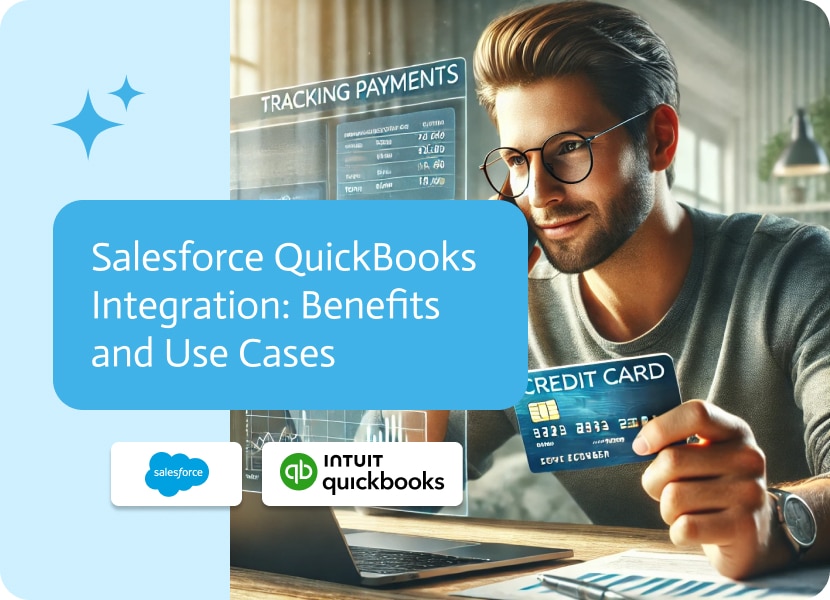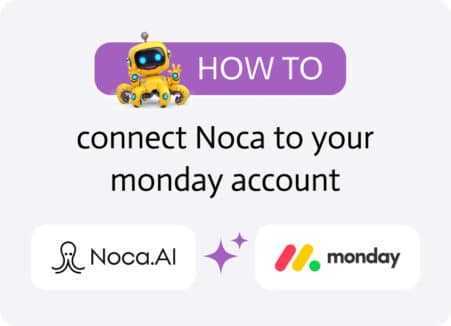

Salesforce QuickBooks Integration: Benefits and Use Cases
Integrating Salesforce with QuickBooks is a powerful solution for businesses looking to streamline their financial processes, automate invoicing, and enhance payment tracking. By combining Salesforce’s CRM capabilities with QuickBooks’ accounting functions, companies can ensure seamless data flow between their sales and finance teams. This strategic integration offers businesses the ability to automate time-consuming tasks, reduce manual data entry errors, and create real-time financial visibility, empowering teams to make informed, data-driven decisions.
With the increasing need for streamlined workflows and accurate financial insights, Salesforce and QuickBooks integration has gained significant traction in today’s business landscape. In this article, we will dive into the benefits of integration, various integration methods, key use cases, common challenges, and best practices for success. Additionally, we’ll explore frequently asked questions (FAQs) to help guide your implementation strategy.

Benefits of Salesforce QuickBooks Integration
1. Streamlined Workflows
One of the most significant benefits of integrating Salesforce and QuickBooks is the automation of key processes, such as invoicing and sales order management. When a deal is closed in Salesforce, an invoice can be generated automatically in QuickBooks, eliminating manual data entry and minimizing errors. This streamlined approach shortens billing cycles, accelerates payment processing, and reduces human error in critical financial tasks.
Moreover, sales orders created in Salesforce can be seamlessly transmitted to QuickBooks, allowing finance and sales teams to work in tandem without the need for double entries or redundant data tracking. This ultimately speeds up the sales-to-cash cycle, improves operational efficiency, and contributes to a smoother overall customer experience.
2. Enhanced Financial Visibility and Data Accuracy
Salesforce QuickBooks integration provides teams with a complete view of financial transactions directly from within Salesforce. This visibility includes access to invoices, payments, expenses, and financial reports, all of which can be viewed in real-time. This unified access to customer and financial data enables businesses to make informed, data-driven decisions with confidence.
With real-time synchronization between the two platforms, businesses can ensure that financial data remains accurate and up-to-date. This eliminates discrepancies and enhances the precision of financial reporting, forecasting, and budget management.
3. Improved Customer Insights
Integrating Salesforce and QuickBooks allows businesses to gain a 360-degree view of their customers by combining CRM data with financial records. Sales representatives, for example, can see a customer’s complete financial history, including outstanding payments, past transactions, and any payment disputes.
This holistic view of the customer enables sales and service teams to personalize interactions and deliver a more informed, customer-centric approach. Finance teams can also use this integration to provide timely and accurate billing information, leading to quicker resolution of customer inquiries.
4. Optimized Performance for Business Leaders
For executives and business leaders, the integration offers a unified view of both customer relationships and overall financial health. This level of insight enables them to make strategic decisions based on real-time data across multiple departments. With greater visibility into financial performance metrics such as revenue growth, cash flow, and outstanding balances, leaders can better assess the effectiveness of their strategies and adjust business operations accordingly.
5. Driving Innovation and Collaboration
Salesforce and QuickBooks integration enhances collaboration between sales and finance teams. By providing a unified data platform, both departments can work toward shared business goals with increased clarity and precision. For example, sales teams can prioritize leads based on financial insights, and finance teams can align their efforts with customer trends observed in Salesforce.
Furthermore, the insights gained from the integration enable businesses to innovate their offerings, refine marketing strategies, and create more effective customer service processes. As a result, the integration helps foster sustained business growth and stronger customer relationships.
Integration Methods
Integrating Salesforce with QuickBooks can be achieved through several methods, each catering to different business needs. Here’s a breakdown of the key methods, their advantages, and disadvantages:
1. Built-in Connectors
Built-in connectors are pre-configured tools designed to facilitate integration between Salesforce and QuickBooks. These connectors often feature real-time or scheduled synchronization of data, ensuring smooth data transfer between the two systems.
Advantages:
- Quick deployment without the need for custom development.
Disadvantages:
- Limited customization options, making it less ideal for businesses with complex workflows or requirements.
- May lack advanced features needed for large enterprises or businesses with high-volume transactions.
- Limited monitoring capabilities.
2. Third-Party Integration Tools
Third-party platforms, such as Noca AI, offer more flexible and customizable integration solutions compared to built-in connectors. These tools are designed to connect Salesforce with QuickBooks and can be tailored to fit specific business needs.
Advantages:
- Higher level of customization, making it ideal for businesses with complex workflows.
- Advanced features, such as custom data mapping and automated reporting.
- Integration with other applications and systems beyond Salesforce and QuickBooks.
Disadvantages:
- Third party tool dependency.
3. Custom Development via APIs
For businesses with highly specialized integration needs, custom development using Application Programming Interfaces (APIs) provides the most flexibility. This approach allows for a fully customized solution, tailored to the exact requirements of the organization.
Advantages:
- Fully customizable to meet specific business processes and data workflows.
- Scalable to accommodate future business growth and additional system requirements.
Disadvantages:
- Requires significant technical expertise and development resources, increasing the complexity and cost of implementation.
- Longer setup time compared to pre-built connectors or third-party tools.
- Ongoing maintenance and troubleshooting will require in-house technical support.
Use Cases for Salesforce QuickBooks Integration
1. Automating Invoicing and Payment Tracking
One of the most common and valuable use cases for Salesforce QuickBooks integration is the automation of invoicing and payment tracking processes. Once a deal is closed in Salesforce, an invoice can be generated and sent automatically through QuickBooks. This eliminates the need for manual data entry, accelerates the invoicing process, and reduces the risk of human error.
Automated payment tracking ensures that payments are accurately reflected in both Salesforce and QuickBooks in real-time, allowing teams to stay up-to-date on the financial status of each customer. Finance teams can monitor outstanding invoices, send reminders, and track payment statuses all from within the integrated system, ensuring efficient cash flow management.
2. Categorizing Financial Transactions
Another critical use case is the ability to categorize financial transactions more effectively. With the integration, businesses can classify income, expenses, and other financial transactions by different categories, such as business revenue, personal expenses, or specific sales campaigns. This categorization helps businesses maintain accurate financial records and simplifies the reporting process, especially during tax season or financial audits.
For instance, by categorizing sales revenue generated from specific customer segments, sales teams can better analyze the profitability of certain demographics and adjust their marketing strategies accordingly.
3. Enhancing Sales and Financial Collaboration
The integration of Salesforce and QuickBooks also fosters better collaboration between sales and finance teams. With access to real-time financial data, sales reps can gain insights into a customer’s outstanding balances, payment history, and credit status before closing new deals. This financial transparency allows sales teams to prioritize high-value leads, offer tailored payment terms, and close deals more strategically.
On the other hand, finance teams benefit from access to customer relationship data, helping them make more informed decisions regarding payment schedules, credit approvals, and budgeting. This unified approach to customer and financial data strengthens interdepartmental collaboration and ensures smoother operations.
4. Simplifying Financial Audits
Auditing processes become significantly easier with Salesforce and QuickBooks integration. By centralizing all financial data in one place, businesses can easily retrieve information for audits, track the status of transactions, and ensure compliance with industry regulations. The integration eliminates the need to manually gather financial records from multiple sources, making the audit process more efficient and less prone to errors.
Auditors can easily trace each transaction from its initiation in Salesforce to its financial impact in QuickBooks, ensuring transparency and reducing the likelihood of discrepancies.
5. Real-Time Business Insights and Decision-Making
With Salesforce and QuickBooks integration, businesses gain real-time insights into both their sales and financial performance. This data allows companies to make quicker, more informed decisions regarding inventory management, demand forecasting, and financial planning. The ability to access live data from both systems ensures that businesses can adapt to changing market conditions and customer behaviors with greater agility.
Whether it’s adjusting inventory levels based on sales trends or reallocating marketing budgets to capitalize on high-performing customer segments, real-time insights empower business leaders to make data-driven decisions.
Common Challenges and Considerations
1. Data Integrity and Management
Ensuring the accuracy and integrity of data is critical when integrating Salesforce and QuickBooks. Companies need to validate and clean their data before syncing the two systems to avoid duplicate records or data mismatches. Regular data audits and cleansing processes should be implemented to maintain data accuracy over time.
2. Employee Training and Preparedness
To maximize the benefits of Salesforce and QuickBooks integration, it’s essential to prepare employees for the transition. This includes organizing training sessions to familiarize team members with the new processes and systems. A well-prepared workforce will be able to leverage the full potential of the integration, ensuring smoother workflows and higher adoption rates.
3. Compliance and Security
With the integration of financial data, businesses must prioritize compliance with relevant industry regulations, such as GDPR or financial reporting standards. Implementing access controls, encryption, and role-based permissions will ensure that sensitive financial data is protected.
4. Potential Workflow Disruptions
During the initial implementation, businesses may experience temporary workflow disruptions as teams adjust to the new integrated system. It’s important to have a detailed change management plan in place, including clear communication channels and user guides to address any concerns that arise during the transition.
Best Practices for Successful Integration
- Conduct Thorough Research: Before choosing an integration method, assess your organization’s unique needs, budget, and the complexity of workflows. This ensures that you select the most appropriate solution.
- Automate Data Sync: Automating data synchronization between Salesforce and QuickBooks reduces the likelihood of errors and improves efficiency across departments.
- Employee Training: Invest in comprehensive training sessions to ensure your team understands the new processes and tools introduced by the integration.
- Monitor and Optimize: Regularly monitor the integration’s performance to ensure it meets your business goals. Conduct ongoing reviews to identify opportunities for further optimization and improvements.

Q&A: Salesforce QuickBooks Integration
- What is Salesforce QuickBooks integration?
This Salesforce integration allows businesses to synchronize customer relationship data from Salesforce with financial data from QuickBooks, enabling seamless automation of processes such as invoicing, sales order management, and payment tracking. - Why is data accuracy important in Salesforce QuickBooks integration?
Accurate data ensures that both sales and finance teams are working with up-to-date, error-free information, reducing discrepancies and improving financial reporting and decision-making. - What integration method should I choose for my business?
The choice depends on your business size, budget, and complexity of workflows. Built-in connectors are ideal for small businesses and NGO’s, while third-party tools and custom development are better suited for larger or more complex needs. - What are some challenges with Salesforce QuickBooks integration?
Common challenges include data integrity, employee preparedness, compliance with regulations, and potential workflow disruptions during implementation. - How does Salesforce QuickBooks integration benefit customer service?
By providing customer service teams with real-time financial data, the integration allows them to respond more efficiently to billing inquiries and provide personalized support, improving overall customer satisfaction.
Integrating Salesforce with QuickBooks offers a wide range of benefits, from automating invoicing to providing real-time business insights. By choosing the right integration method and following best practices, businesses can enhance their operational efficiency, foster better collaboration between teams, and make data-driven decisions for long-term growth.


